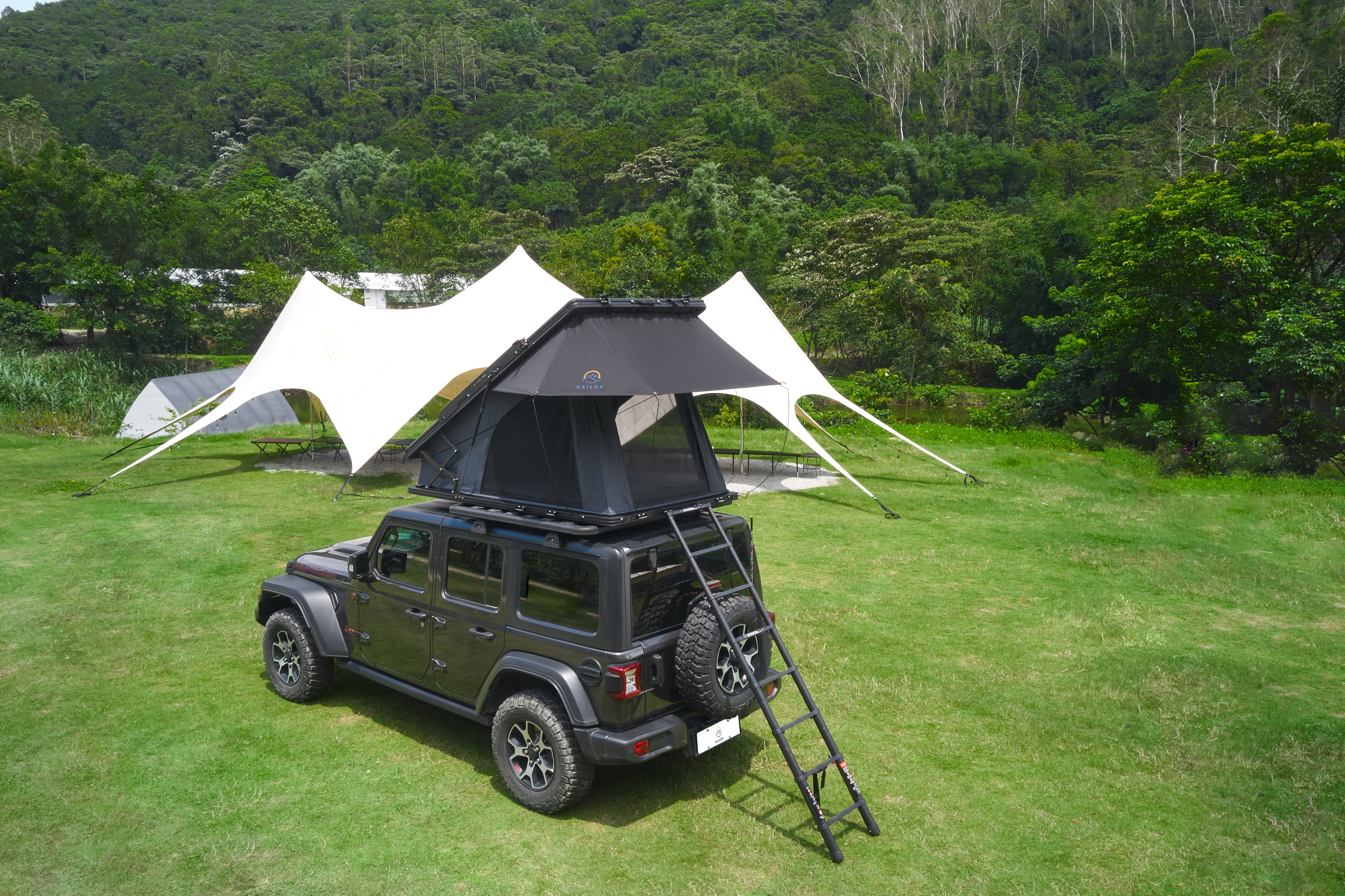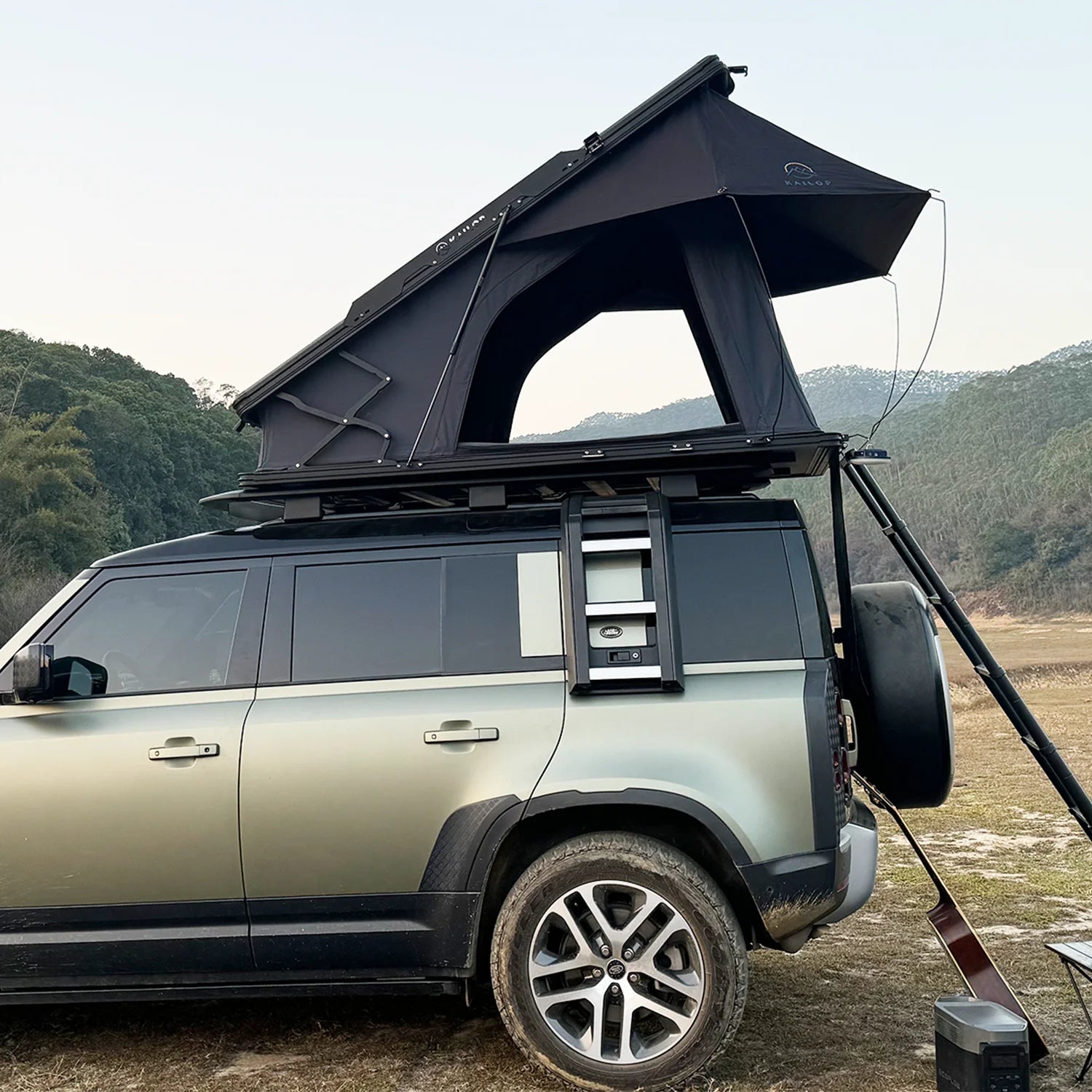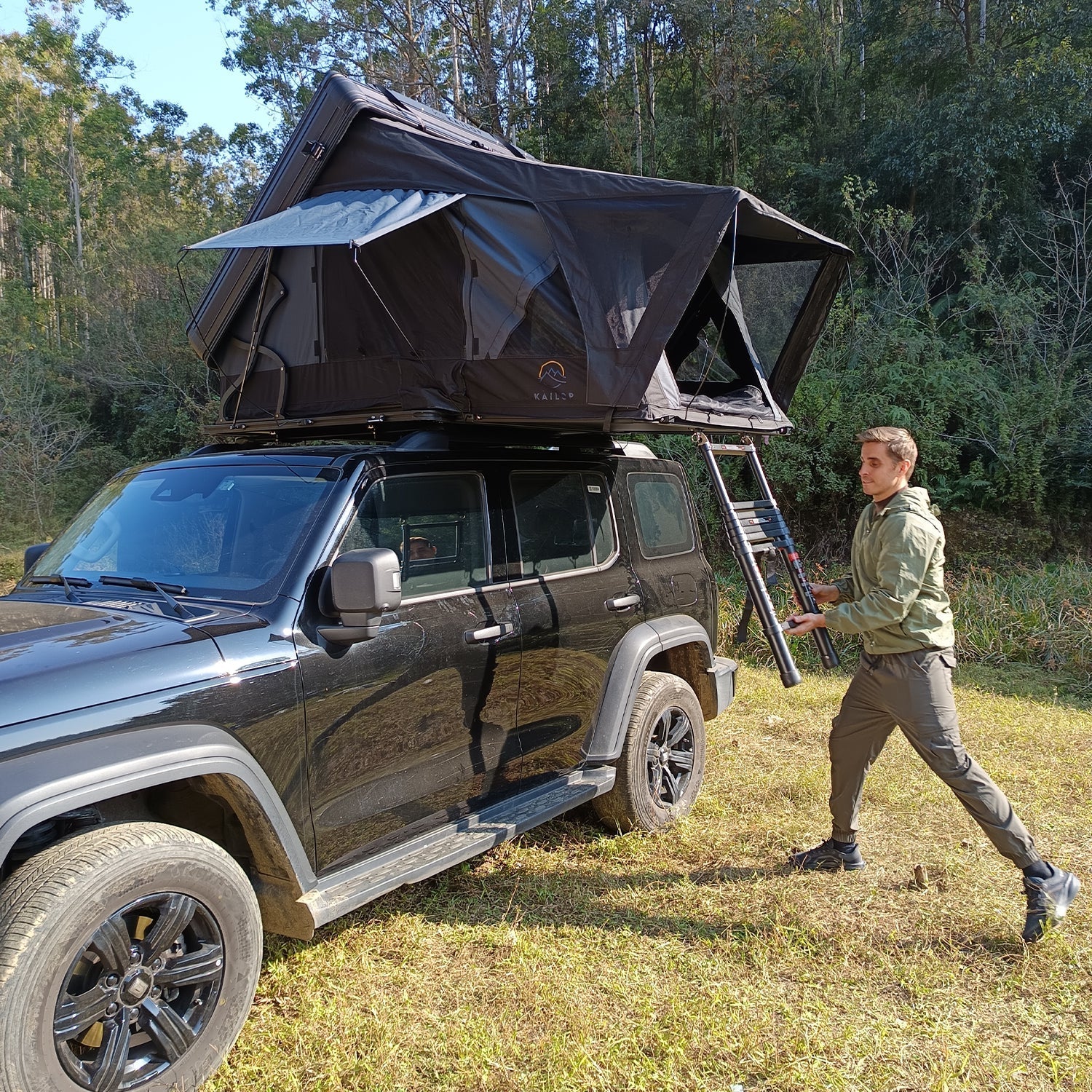We are delighted that you have chosen the Kailop hard shell roof tent! So you can easily plan your camping trip in detail! If you're still wondering how to safely install a car roof tent on your car, we have a plan for you! In this article “How to install a tent”, we will explain and introduce you to the car models that can be installed, the two load capacities of the roof racks, the points to consider during installation, as well as some recommended brands of poles and roof racks suitable for installing a roof tent on our car. After reading this article, you will be sure that there are roof rack systems that are suitable for any situation, be it road trips, overlanding or driving in complex environments in a variety of situations. As a rule, there are two common mounting options for vehicles. If you want to mount the tent on a car or SUV, you need to prepare the accessories: Roof racks and crossbars; the Kailop Adventure 1.0 is equipped with four attachments that must be used in conjunction with the crossbars to secure it firmly to the car roof, and since the crossbars cannot be mounted without the roof racks, both are a must for mounting the tent. If you now want to mount the tent on your truck, you need to prepare the accessories: Roof rack, crossbars, bed frame; if your truck trunk is lower than 7 feet and you want to have a roof tent for 2-3 people like the Kailop Adventure 1.0 or Kailop Adventure 2.0, you will need a trunk rack that is the same height as the cab. This allows the roof tent to extend over the cab instead of hanging from the rear mudguard. It also gives you maximum vertical storage space in your compartment. This article is about crossbars and roof racks for cars, off-road vehicles and trucks.
What is the difference between roof racks and crossbars?
As a rule, there are two common mounting options for vehicles. If you want to mount your tent on a sedan or SUV, you need to prepare the accessories: Roof racks and crossbars; the Kailop Adventure 1.0 is equipped with four brackets that must be used in conjunction with the crossbars to secure it firmly to the vehicle roof, and since the crossbars cannot be mounted without roof racks, both are a must for installing the tent. If you now want to mount the tent on your truck, you need to prepare the accessories: Roof rack, crossbars, bed frame; if your truck trunk is lower than 7 feet and you want to have a roof tent for 2-3 people like the Kailop Adventure 1.0 or Kailop Adventure 2.0, you will need a trunk rack that is the same height as the cab. This allows the roof tent to extend over the cab instead of hanging from the rear mudguard. It also gives you maximum vertical storage space in your compartment. This article is about crossbars and roof racks for cars, off-road vehicles and trucks.
Below you will find examples of crossbars fitted to Jeeps

How much weight can be transported on a roof rack/crossbar?
This article is closely related to the type of roof tent you choose and other items you want to mount on the roof of your vehicle. Here you can find out about the static and dynamic load capacity ranges for roof bars and crossbars;
There are usually two types of load capacity, 1. static load capacity and 2. dynamic load capacity, both of which are related to the material of the tent and the poles and beams you purchase. When browsing tent shopping sites, you will often ask yourself, “Is the vehicle strong enough to support the weight of a rooftop tent?”. The answer to this question is “yes”. Before you order a roof rack or crossbar, you need to calculate the total weight you want to add. If you know this, you can better determine the structure of your roof rack
WHAT IS DYNAMIC LOAD CAPACITY: The maximum load capacity that an object or structure can withstand under dynamic loads such as movement, vibration, impact or cyclically changing forces. (In addition to the total weight of the roof tent: the pressure of wind resistance, the upward and downward movements of gravity, etc. are usually greater than the total weight under static conditions)
What is static load capacity: the maximum load capacity that an object or structure can withstand at rest, usually refers to the ability of a material or structure to remain stable without the influence of dynamic factors such as movement, impact or vibration and not to permanently deform or destroy [the sum of the weights of all parts under static conditions].
So: The weight stated on our Kailop Adventure 1.0/Kailop Adventure 2.0 is the weight of the tent itself, it should be noted whether the load-bearing capacity of the vehicle under static conditions is greater or significantly greater than this weight and whether the vehicle under dynamic conditions is not negatively affected by the installation of the tent if it fully meets the requirements of the body under static conditions.
Our rooftop tents weigh between 182 lbs and 230 lbs, so we always recommend that when purchasing crossbars or racks, you check to see if their load capacity is greater than the weight of the tent, especially if you plan to drive off-road.
We designed the Kailop Adventure 1.0 (182 lbs.) out of aluminum hard shell material that can be mounted on SUV, Jeep and truck trunks. It features an excellent shell design with reduced wind resistance that does not compromise the riding experience.
Can a roof tent be mounted on a crossbar?
This is the most common and cost-effective solution for installing a roof tent. There are different types of crossbars for roof tents, and how they are fitted will depend on your vehicle. Crossbars are a good option as the current crossbars are designed to be compatible with a wider range of vehicles as they are not specifically designed for the size of your roof like most roof bars. (Usually two crossbars need to be installed).
However, if you plan on carrying a lot of gear in your vehicle, you may want to consider a roof rack instead of crossbars (learn more about roof racks later).
As crossbars come in many sizes and models, you will need to provide your vehicle details when ordering your crossbars so that the correct type of crossbar can be recommended for your vehicle.
Fastening points for tents:
The mounting kit supplied with the tent consists of four sets of nuts and bolts and must be attached at four points. These fixing points are usually made of alloy and have threaded inserts that allow the crossbars to be secured with bolts;
Curves:
Long metal channels, slots or rails located above the door in a similar position to the side rails.
There are mounting rails on the underside of the tent:
Simply read the assembly instructions for the relevant Kailop tent model. As the tents are heavy, 2-4 people usually have to work on them at the same time.
What kind of roof racks do I need for a roof tent?
Roof racks are a good option for campers who want to mount a roof tent, awning, tow boards, storage boxes, etc. on the roof of their vehicle. Roof racks are relatively easy to fit and extremely practical, and for campers who travel a lot, once the roof rack is fitted they will most likely be hanging off the roof of the car all the time. Roof racks make it possible to fit more camping equipment on the car roof, resulting in a better space layout and a more comfortable and spacious interior.
Types of roof racks
Common roof racks are:
Fixed crossbar luggage rack: consisting of two crossbars, it attaches directly to the roof mounting points or roof rails and is suitable for most roof tents.
T-slot luggage rack: with T-slots for easy installation of tent racks.
Roof rail luggage rack: is fitted to vehicles with roof rails to hold the crossbars.
Luggage carrier without railing: is mounted on the door frame using clips, for vehicles without roof rails
We prefer to fit roof racks with mounting rails/crossbars rather than basket roof racks. This is because you cannot fit a roof tent to a basket roof rack.






Leave a comment
This site is protected by hCaptcha and the hCaptcha Privacy Policy and Terms of Service apply.